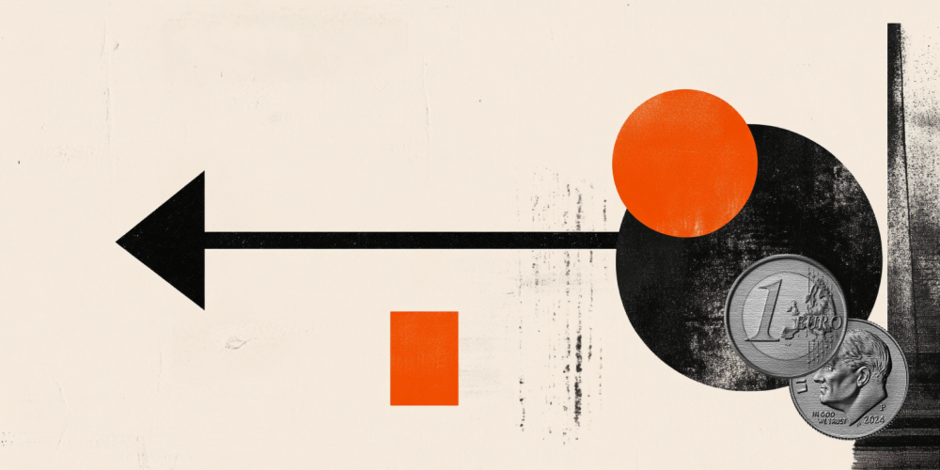Created
: 2025.02.25














![]() 2025.02.25 13:28
2025.02.25 13:28
The EUR/USD pair gathers strength to near 1.0470 during the Asian trading hours on Tuesday. The Euro (EUR) gains ground after the conservative alliance made up by the Christian Democratic Union (CDU) and its allies the Christian Social Union (CSU) is set to lead Germany again following the federal election on Sunday, bringing an end to a period of political instability that has dogged Berlin for months.
Technically, the bearish outlook of EUR/USD remains in play, with the major pair remaining capped below the key 100-period Exponential Moving Average (EMA) on the daily chart. However, further upside cannot be ruled out as the 14-day Relative Strength Index (RSI) stands above the midline around 55.50.
The first downside target for the major pair emerges at 1.0400, representing the psychological mark and the low of February 19. Extended losses could see a drop to the lower limit of the Bollinger Band at 1.0295. A decisive break below the mentioned level could pave the way to 1.0210, the low of February 3.
On the bright side, the key resistance level for the major pair is located at 1.0525-1.0530, portraying the 100-day EMA and the upper boundary of the Bollinger Band. Sustained trading above this level could attract some buyers to 1.0630, the high of December 6, 2024. Further north, the next hurdle is seen at 1.0777, the low of August 1, 2024.
The European Central Bank (ECB) in Frankfurt, Germany, is the reserve bank for the Eurozone. The ECB sets interest rates and manages monetary policy for the region. The ECB primary mandate is to maintain price stability, which means keeping inflation at around 2%. Its primary tool for achieving this is by raising or lowering interest rates. Relatively high interest rates will usually result in a stronger Euro and vice versa. The ECB Governing Council makes monetary policy decisions at meetings held eight times a year. Decisions are made by heads of the Eurozone national banks and six permanent members, including the President of the ECB, Christine Lagarde.
In extreme situations, the European Central Bank can enact a policy tool called Quantitative Easing. QE is the process by which the ECB prints Euros and uses them to buy assets - usually government or corporate bonds - from banks and other financial institutions. QE usually results in a weaker Euro. QE is a last resort when simply lowering interest rates is unlikely to achieve the objective of price stability. The ECB used it during the Great Financial Crisis in 2009-11, in 2015 when inflation remained stubbornly low, as well as during the covid pandemic.
Quantitative tightening (QT) is the reverse of QE. It is undertaken after QE when an economic recovery is underway and inflation starts rising. Whilst in QE the European Central Bank (ECB) purchases government and corporate bonds from financial institutions to provide them with liquidity, in QT the ECB stops buying more bonds, and stops reinvesting the principal maturing on the bonds it already holds. It is usually positive (or bullish) for the Euro.
![]()
Created
: 2025.02.25
![]()
Last updated
: 2025.02.25

FXStreet is a forex information website, delivering market analysis and news articles 24/7.
It features a number of articles contributed by well-known analysts, in addition to the ones by its editorial team.
Founded in 2000 by Francesc Riverola, a Spanish economist, it has grown to become a world-renowned information website.
We hope you find this article useful. Any comments or suggestions will be greatly appreciated.
We are also looking for writers with extensive experience in forex and crypto to join us.
please contact us at [email protected].
Disclaimer:
All information and content provided on this website is provided for informational purposes only and is not intended to solicit any investment. Although all efforts are made in order to ensure that the information is correct, no guarantee is provided for the accuracy of any content on this website. Any decision made shall be the responsibility of the investor and Myforex does not take any responsibility whatsoever regarding the use of any information provided herein.
The content provided on this website belongs to Myforex and, where stated, the relevant licensors. All rights are reserved by Myforex and the relevant licensors, and no content of this website, whether in full or in part, shall be copied or displayed elsewhere without the explicit written permission of the relevant copyright holder. If you wish to use any part of the content provided on this website, please ensure that you contact Myforex.
Myforex uses cookies to improve the convenience and functionality of this website. This website may include cookies not only by us but also by third parties (advertisers, log analysts, etc.) for the purpose of tracking the activities of users. Cookie policy